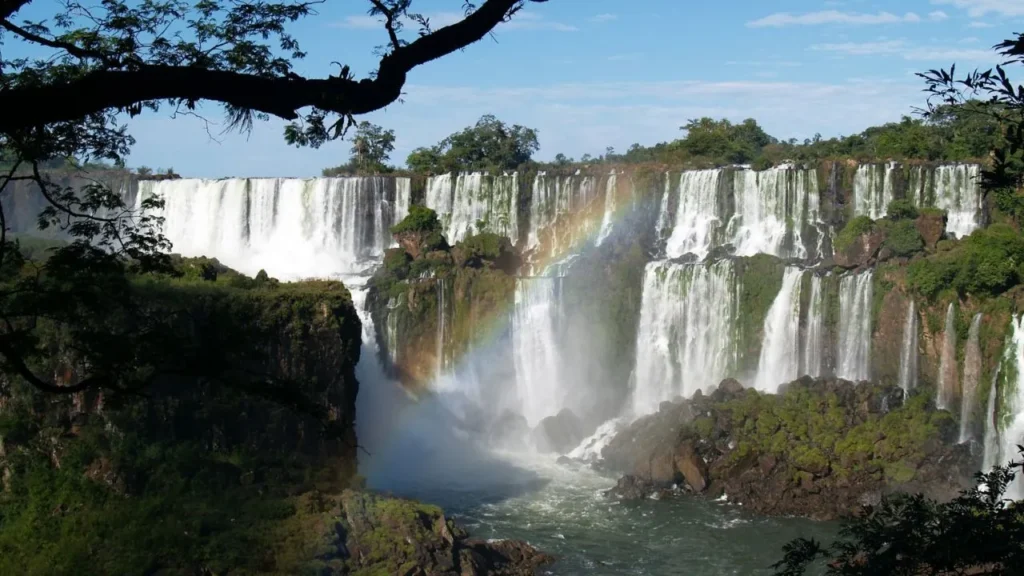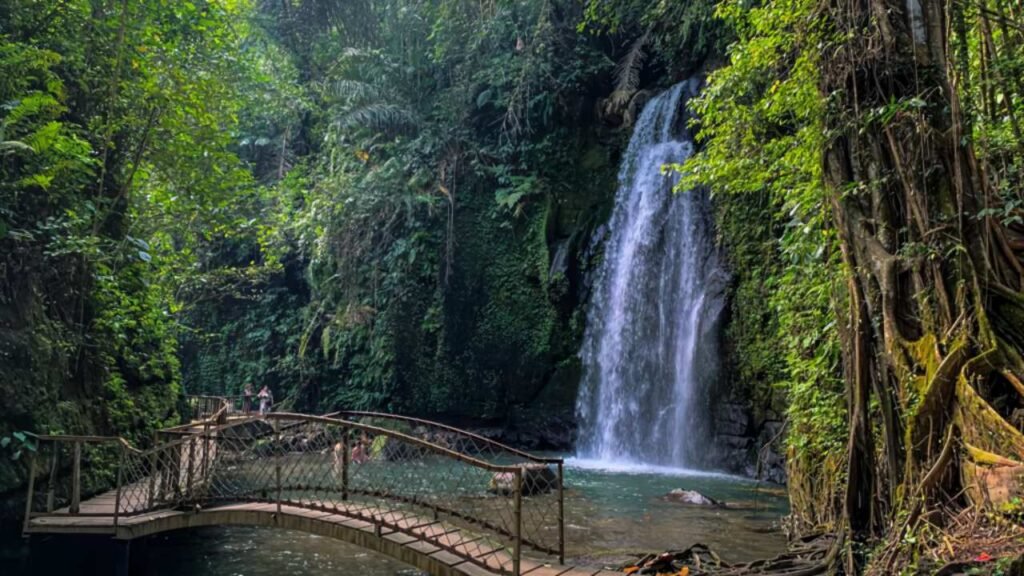Chasing Cascades Across the Globe
Few natural wonders rival the mesmerizing power of a waterfall, where water tumbles over cliffs in a symphony of mist and motion. Waterfall walks, blending invigorating hikes with breathtaking vistas, beckon adventurers to immerse themselves in nature’s grandeur. From the thundering roar of Victoria Falls to the serene cascades of Plitvice Lakes, these trails offer a sensory escape, inviting travelers to reconnect with the wild. In 2025, as sustainable tourism gains momentum, waterfall hikes provide not only personal rejuvenation but also a chance to support conservation and local communities.
This article celebrates seven of the world’s most captivating waterfall walks, each a testament to the planet’s beauty and resilience. Drawing on recent insights, we’ll guide you through trails that promise adventure, awe, and a deeper appreciation for nature. Whether you’re a seasoned hiker or a curious novice, these walks invite you to take the plunge into the heart of the wilderness, where every step reveals a new facet of the world’s cascading wonders.
Why Waterfall Walks Captivate
Waterfalls hold a universal allure, drawing millions to their misty embrace. Their sensory impact is profound: the rhythmic crash of water, the cool spray on skin, and the vibrant greenery framing each cascade create an immersive experience. Psychologically, waterfalls evoke awe, reducing stress and fostering a sense of wonder, as studies on nature’s restorative effects suggest. Ecologically, they are vital, nourishing rivers, sustaining biodiversity, and shaping landscapes through erosion.
The appeal of waterfall walks lies in their diversity. Some trails, like those to Yosemite Falls, demand stamina, rewarding hikers with panoramic views, while others, like Croatia’s Plitvice Lakes, offer gentle paths accessible to all. Waterfalls also carry cultural weight—sacred to indigenous communities or celebrated in art and literature—adding layers of meaning to each journey. In 2025, the rise of eco-conscious travel amplifies their draw, as hikers seek destinations that align with sustainability goals. Whether chasing adventure or tranquility, waterfall walks offer a timeless connection to the planet, making them a must for any explorer’s list.
7 Wonderful Waterfall Walks
Below are seven exceptional waterfall walks across the globe, selected for their beauty, accessibility, and unique appeal. Each includes trail details, highlights, and tips for visiting in 2025, inspired by recent sources like Travel + Leisure and World Wild Schooling.
1. Skógafoss, Iceland
Location: South Iceland, near Skógar
Trail: Skógafoss Waterfall Trail (1.2 miles round-trip, easy to moderate)
Highlights: Skógafoss, one of Iceland’s most iconic waterfalls, plunges 200 feet with a dramatic curtain of water, often framed by rainbows. The short trail ascends a staircase beside the falls, offering sweeping views of the Atlantic coast and volcanic landscapes. Legends of hidden Viking treasure add mystique.
Difficulty: The flat path is beginner-friendly, but the 400+ steps to the top require moderate fitness.
2025 Tips: Visit in May for milder weather and fewer crowds. Wear waterproof gear, as mist is heavy. Book accommodations in Vík early, as Iceland’s popularity surges. Use eco-friendly tour operators to minimize environmental impact.
2. Victoria Falls, Zimbabwe & Zambia
Location: Border of Zimbabwe and Zambia
Trail: Victoria Falls National Park Trail (2–3 miles, easy)
Highlights: Known as the “Smoke That Thunders,” Victoria Falls is the world’s largest sheet of falling water, stretching over a mile. The trail winds through rainforest, offering vantage points like Devil’s Cataract and Knife-Edge Bridge, with mist-soaked views and wildlife sightings.
Difficulty: Flat and accessible, suitable for all ages, though slippery paths require caution.
2025 Tips: Visit in April or May for peak water flow and vibrant scenery. Bring a raincoat and protect electronics. Support local guides to boost the economy, and choose lodges with sustainable practices, as eco-tourism grows in the region.
3. Plitvice Lakes National Park, Croatia
Location: Central Croatia
Trail: Upper and Lower Lakes Trail (5 miles, moderate)
Highlights: This UNESCO World Heritage Site features 16 turquoise lakes connected by cascading waterfalls, with Veliki Slap as the tallest at 256 feet. Boardwalks and paths weave through lush forests, showcasing crystal-clear waters and diverse flora.
Difficulty: Moderate, with some uneven terrain and steps; accessible routes available.
2025 Tips: Visit in spring to avoid summer crowds. Purchase tickets online to secure entry, as daily limits apply. Stay in eco-lodges nearby and follow park rules to preserve this delicate ecosystem. Electric boats reduce carbon impact.
4. Havasu Falls, Arizona, USA
Location: Grand Canyon, Havasupai Reservation
Trail: Havasu Falls Trail (20 miles round-trip, strenuous)
Highlights: Havasu Falls, with its vibrant turquoise waters, is a desert oasis framed by red cliffs. The challenging hike descends 2,000 feet into the canyon, passing Mooney and Navajo Falls, with opportunities to swim in natural pools.
Difficulty: Strenuous, requiring permits, fitness, and preparation for remote conditions.
2025 Tips: Secure permits well in advance, as they’re limited. Visit in April or May for cooler temperatures. Respect Havasupai cultural protocols and pack out all waste to protect the environment. Guided tours support the tribe’s economy.

5. Iguazu Falls, Argentina & Brazil
Location: Border of Argentina and Brazil
Trail: Iguazu National Park Circuit (4–6 miles, moderate)
Highlights: Iguazu Falls comprises 275 cascades, with the Devil’s Throat as its centerpiece, a U-shaped chasm of roaring water. Trails on both sides offer distinct perspectives: Argentina’s paths provide close-up views, while Brazil’s offer panoramas. Tropical wildlife, like toucans, abounds.
Difficulty: Moderate, with some stairs; accessible walkways available.
2025 Tips: Spend two days—one per side—for the full experience, as recommended on Reddit. Visit in May for balanced weather. Book eco-friendly lodges and use reusable water bottles to reduce plastic waste.
6. Multnomah Falls, Oregon, USA
Location: Columbia River Gorge, Oregon
Trail: Multnomah Falls Trail (2.4 miles round-trip, moderate)
Highlights: At 620 feet, Multnomah Falls is Oregon’s tallest, cascading in two tiers over basalt cliffs. The trail leads to a scenic bridge and an optional ascent to the top, offering misty views and forest serenity.
Difficulty: Moderate, with steep switchbacks for the upper trail; the lower path is easy.
2025 Tips: Visit early morning to avoid crowds, especially in spring. Park at the nearby lot and use shuttle services to reduce congestion. Support local businesses by dining in Hood River, and follow Leave No Trace principles.
7. Nachi Falls, Japan
Location: Kii Peninsula, Wakayama Prefecture
Trail: Kumano Kodo to Nachi Taisha (2 miles round-trip, easy to moderate)
Highlights: Nachi Falls, Japan’s tallest single-drop waterfall at 436 feet, is a sacred site along the Kumano Kodo pilgrimage route. The trail passes through cedar forests and leads to Nachi Taisha shrine, where the falls are revered as a deity.
Difficulty: Easy to moderate, with stone steps; suitable for most hikers.
2025 Tips: Visit in autumn for vibrant foliage, as noted by More Than Tokyo. Wear sturdy shoes for slippery steps. Stay in Katsuura for sustainable ryokans, and respect shrine etiquette to honor cultural traditions.
These walks, spanning continents, offer diverse experiences, from challenging treks to leisurely strolls, each celebrating the raw beauty of waterfalls.
Planning Your Waterfall Adventure
Embarking on a waterfall walk requires preparation to ensure safety and enjoyment. Here are key tips for 2025:
- Gear: Wear waterproof hiking boots with good grip, especially for trails like Iguazu or Skógafoss, where mist makes paths slippery. Pack a lightweight rain jacket, quick-dry clothing, and a reusable water bottle. A compact first-aid kit and insect repellent are wise for remote hikes like Havasu Falls.
- Safety: Check trail conditions and weather forecasts, as waterfalls can swell during rains, increasing risks. Stay on marked paths to avoid erosion or hazards, particularly at Victoria Falls. For strenuous hikes, train in advance and travel with a companion.
- Navigation: Download offline maps or use apps like AllTrails for trails like Multnomah Falls. Carry a portable charger, as GPS drains batteries. Guided tours, available for Plitvice or Iguazu, provide expert insights and safety.
- Sustainability: Follow Leave No Trace principles—pack out trash, avoid picking plants, and respect wildlife. Choose eco-friendly operators, like those in Croatia or Zambia, and offset travel emissions through platforms like Carbonfund.org.
- Permits and Bookings: Secure permits early for Havasu Falls and timed entries for Plitvice Lakes. Book accommodations and guides in advance for popular destinations like Iceland or Japan, especially in spring or autumn.
Plan your trip around shoulder seasons (April–May or September–October) for optimal weather and fewer crowds, ensuring a serene experience.
The Broader Impact of Waterfall Tourism
Visiting waterfall trails does more than satisfy wanderlust—it supports conservation and local economies. Entrance fees at sites like Plitvice Lakes and Victoria Falls fund habitat restoration and anti-poaching efforts, preserving ecosystems for species like otters or hornbills. Guided tours, as seen in posts on X about Sipi Falls, create jobs for local communities, fostering economic resilience.
Sustainable tourism, a 2025 priority, minimizes environmental harm. Eco-lodges near Iguazu or Nachi Falls use renewable energy, while initiatives like Zambia’s carbon-neutral tours reduce footprints. Hikers can amplify impact by supporting indigenous-led businesses, like Havasupai guides, or donating to organizations like the Scottish Wildlife Trust, which protects habitats akin to those at Loch of the Lowes.
Waterfall tourism also raises awareness. Sharing experiences, as encouraged by X posts on Yorkshire’s Cotter Force, inspires others to value nature, driving demand for conservation policies. By choosing responsible travel, visitors contribute to a cycle of preservation, ensuring waterfalls remain pristine for future generations.

A Journey Worth Taking
Waterfall walks, from the misty heights of Skógafoss to the sacred cascades of Nachi Falls, offer a gateway to nature’s splendor. These seven trails, each unique in its beauty and challenge, invite you to step into the wild, where the roar of water and the rustle of leaves awaken the soul. In 2025, as the world embraces sustainable exploration, there’s no better time to lace up your boots and chase these cascades. Plan wisely, tread lightly, and let the journey to these wonderful waterfalls transform your perspective, one breathtaking step at a time.
